Long Shag Guide: Modern Cuts & Styling Inspiration
If you’ve been scrolling through hairstyle inspo and keep circling back to that effortlessly undone, cool-girl vibe — welcome. The long shag is a modern classic: textured, face-framing, and endlessly adaptable. Below you’ll find 13 practical, style-forward ideas that work for different hair textures, face shapes, and lifestyles. Each idea includes what makes it great, how to ask for it at the salon, and quick styling tips so you can walk out looking like you mean it.
Soft face-framing layers
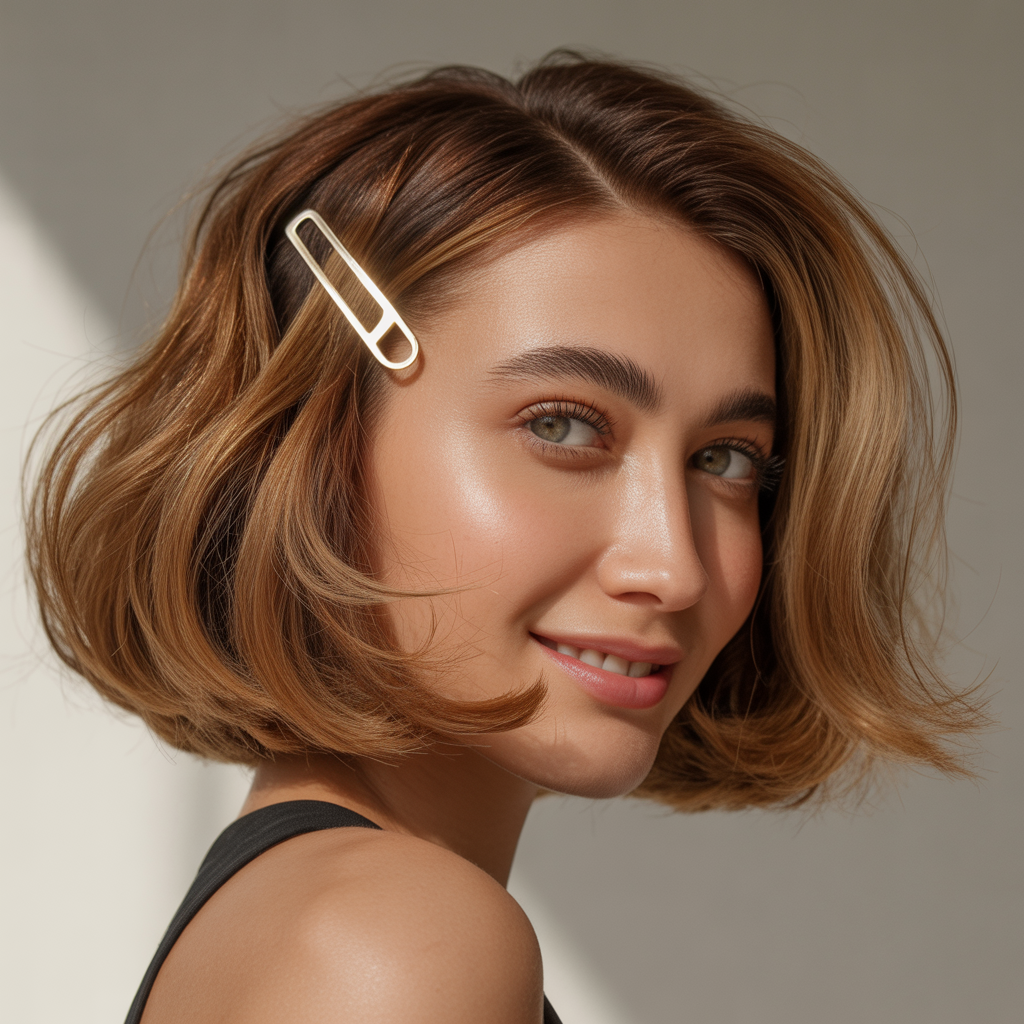
Why it works: Soft layers around the face soften strong features and add movement without sacrificing length.
Ask for: “Long layers that start around the cheekbones with subtle feathering.”
Style tip: Blow-dry with a round brush just at the roots and finish with a texturizing spray on mid-lengths for natural separation.
Curtain bangs with long shag
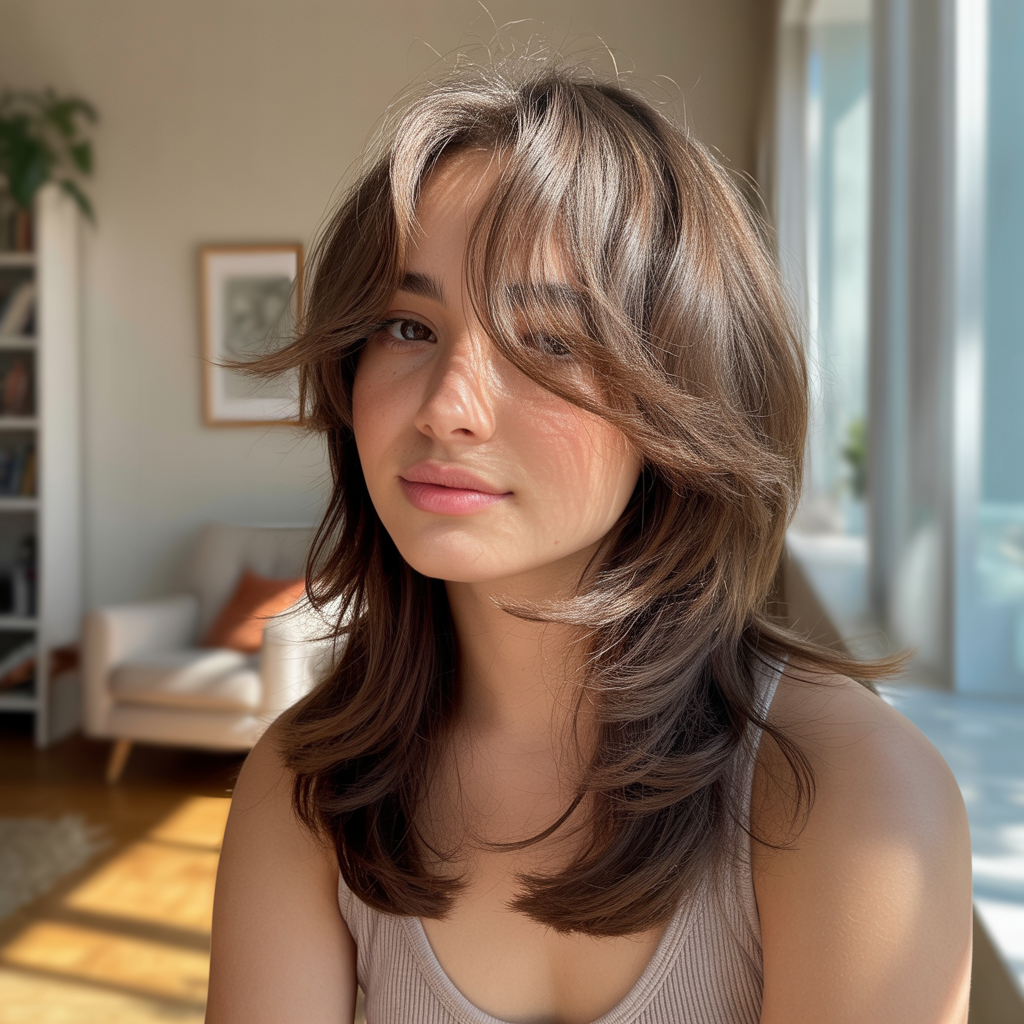
Why it works: Curtain bangs paired with a long shag create instant retro-chic while keeping styling low-effort. They blend into the longer layers for a seamless look.
Ask for: “Curtain bangs that grow out into my shag layers; keep them long enough to tuck behind ears.”
Style tip: Use a flat brush and blow-dryer to sweep bangs open, then tousle the rest with sea-salt spray.
Long shag with curtain-swept fringe (alternative phrasing)
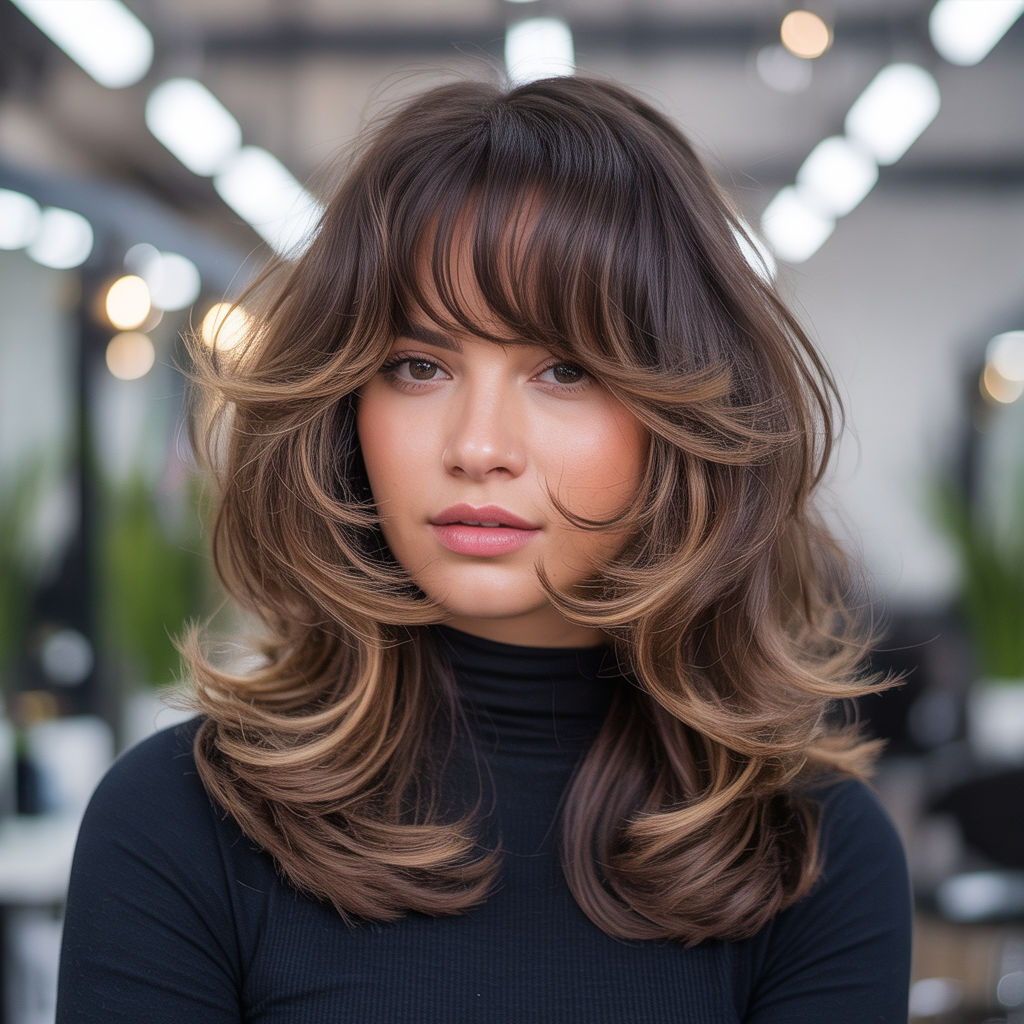
Why it works: If you want a softer fringe than classic curtain bangs, a curtain-swept fringe blends even more naturally. Great for growing out bangs.
Ask for: “Feathered fringe that blends into long layers.”
Style tip: Light pomade on the fringe keeps it in place without looking glued.
Textured beach waves

Why it works: Beachy texture is the perfect partner to a long shag — it highlights layers and adds a lived-in vibe.
Ask for: “Long shag with lots of texture, styled with loose, beachy waves.”
Style tip: Wrap 1–1.25 inch sections around a curling wand, alternate directions, then scrunch with a salt spray.
Long shag with lots of layers (high-contrast)

Why it works: For people who want drama and volume, high-contrast layering gives major shape while preserving length.
Ask for: “Choppy, high-contrast layers through the mid-lengths and ends.”
Style tip: Use a root-lifting mousse at the roots and diffuse dry for natural volume.
Sleek long shag
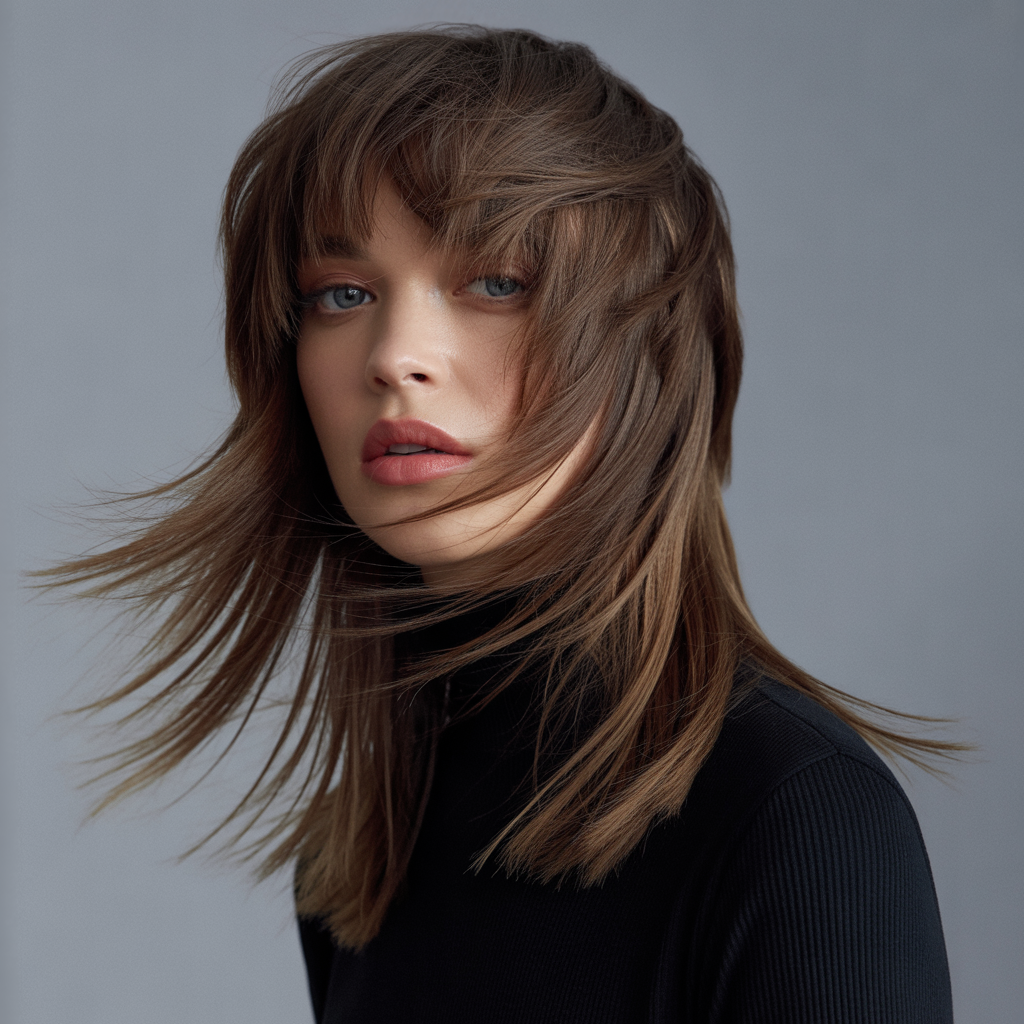
Why it works: Not every shag has to be lived-in — a sleek long shag can feel modern and polished while still showing off the cut’s structure.
Ask for: “Long shag with precise, slightly blunt ends and minimal layering for a sleeker finish.”
Style tip: Straighten with a flat iron and finish with a shine serum to highlight the blunt edges.
Long shag for thin hair

Why it works: A well-placed shag adds the illusion of thickness and movement to fine hair without heavy layering that can thin ends.
Ask for: “Shorter, graduated layers concentrated near the crown and face to create lift.”
Style tip: Use a volumizing spray at the roots and a light-weight texturizer only on the mid-lengths.
Curly long shag

Why it works: Natural curl plus a shag cut = instant personality. The shag’s layering reduces bulk and enhances curl definition.
Ask for: “Layers shaped for my curl pattern, keeping length below the shoulders.”
Style tip: Cut curls dry if possible so the stylist can see how they fall; style with curl cream and diffusing.
Long shag with long bangs
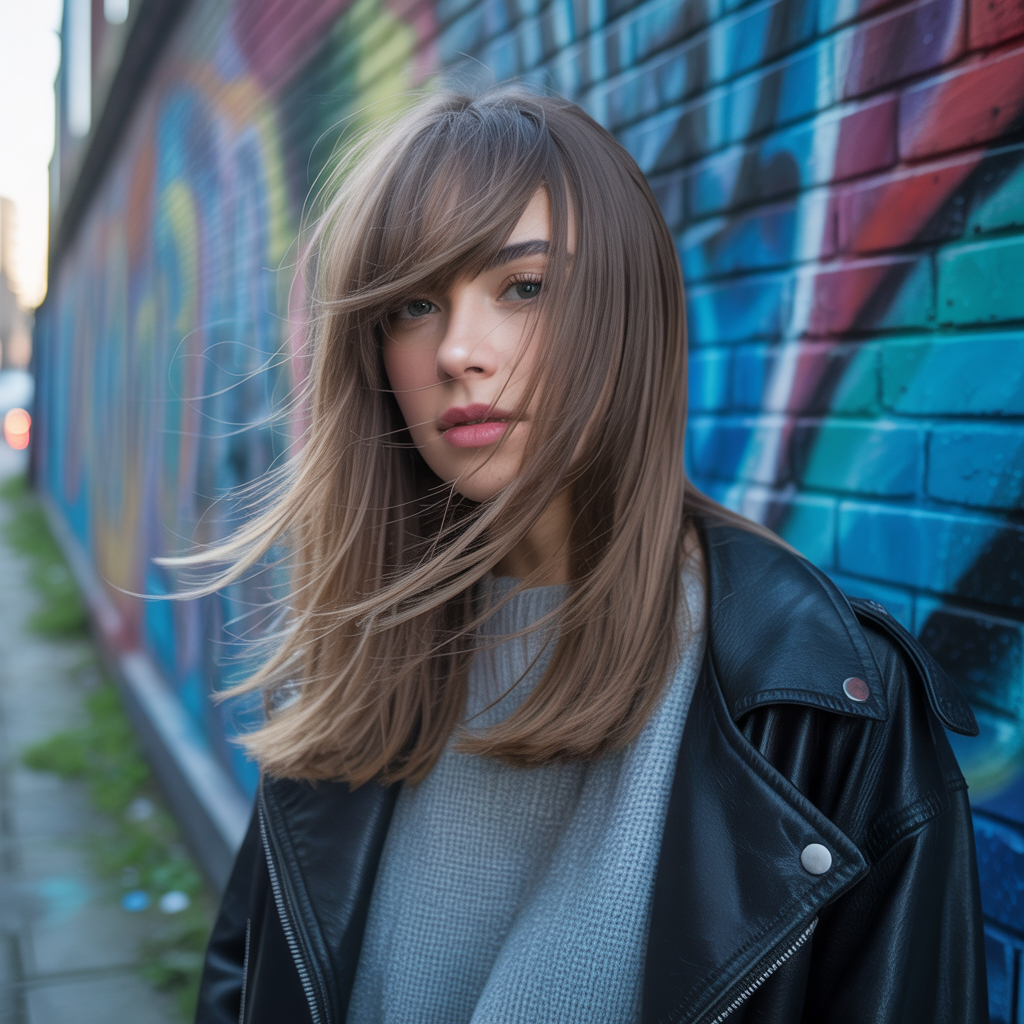
Why it works: Long bangs that blend into layers offer mystery without the upkeep of short bangs; great for those who want a dramatic frame.
Ask for: “Long, side-swept bangs that merge into the shag’s layers.”
Style tip: A large-barrel round brush and a light-hold hairspray keep the sweep in place.
Color play: balayage on a long shag

Why it works: Balayage adds dimension and makes layers read more distinctly, especially when the lighter pieces catch the light.
Ask for: “Soft balayage with face-framing brightness and graduated color toward the ends.”
Style tip: Opt for low-maintenance grow-out by keeping the roots natural and choosing tones that complement your base.
Long shag with lived-in layers (low-maintenance)

Why it works: If you want the shag texture without constant visits to the salon, ask for lived-in layering that grows out gracefully.
Ask for: “Blended layers with soft, feathered ends for a natural grow-out.”
Style tip: Dry-shampoo and a scrunching cream are your friends between washes.
Updo-ready long shag

Why it works: A long shag doesn’t mean you can’t do polished styles — ask for layers that tuck and pin easily so you can still wear buns, half-up styles, and braids.
Ask for: “Layers that are short enough to add texture but long enough to pin into updos.”
Style tip: Use small bobby pins and a flexible-hold spray to pin textured sections in place without smoothing everything down.
Modern shag with soft mullet vibes

Why it works: The subtle mullet (shorter on top, longer in back) has been updated into a wearable long shag version — edgy but sophisticated.
Ask for: “A modern mullet-influenced shag: shorter layers on top, longer length at the back, with soft blending.”
Style tip: Embrace piecey texture using a sea-salt spray; keep the crown slightly lifted for shape.
How to ask for a shag at the salon (what to show and say)
Bring multiple photos: front, side, and back. Show the texture you want (sleek vs. undone). Tell your stylist how often you want to cut and how much daily styling you’ll tolerate. Use terms like “feathered,” “face-framing,” and “blended layers” rather than vague words like “choppy” unless you really want choppy. If you have fine hair, ask for layers concentrated at the crown; for thick hair, ask for thinning or internal layering to remove bulk.
Styling tools and products that actually help
- Texturizing spray — adds separation without stickiness.
- Light-weight oil or serum — for shine on the ends when the shag looks dry.
- Sea-salt spray — for effortless beachy texture.
- Heat protectant — always. If you use hot tools often, it’s non-negotiable.
- Volumizing mousse or root-lift spray — for fine hair needing lift at the crown.
- Flexible-hold hairspray — to set shape without a helmet.
Maintenance and trims
A shag looks best with regular trims to keep layers from getting heavy or losing shape. Plan a trim every 8–12 weeks depending on how fast your hair grows and how tidy you want the style to remain. If you’re committed to a low-maintenance groove, ask for softer, more blended layers so your cut grows out flatter and less “chunky.”
Matching your shag to face shape
- Oval: Anything goes. Try bold layering or curtain bangs.
- Round: Long layers and side-swept bangs elongate the face.
- Square: Soft face-framing layers and textured ends will soften the jawline.
- Heart: Chin-length layers or curtain bangs balance a wider forehead.
- Long: Volume at the sides and blunt ends near the chin add width.
Styling routine for busy mornings
Wake, spritz texturizer or salt spray, rough-dry while flipping hair upside-down for 30 seconds, and finger-comb. If you need polish, run a flat iron through mid-lengths to ends or do loose 20–30 second waves with a 1–1.25 inch wand. Total time: 5–12 minutes depending on how much shaping you do.
Five reality-based FAQs people search about long shags
How frequently should I trim a long shag to keep it looking fresh?
For clean shape, trims every 8–10 weeks are ideal. If you prefer a more lived-in look, you can stretch to 12–14 weeks, but expect the layers to soften and lose definition.
Will a long shag work on very curly, tight hair?
Yes — but it requires a stylist experienced with curls. Layers should be cut to the curl pattern (often dry), and you’ll want products that define without weighing hair down. A long shag can reduce bulk and enhance natural curl shape.
Can I grow out a short shag into a long shag without awkward stages?
Growing out a shag takes planning. Ask your stylist for gradual layering and softer edges so the transition creates shape while length increases. Regular trims to remove split ends will keep it healthy.
How do I prevent a long shag from looking frizzy or unkempt?
Use a smoothing serum or light oil on the ends, avoid over-washing (2–3× per week if possible), and invest in a good heat protectant. For humid climates, anti-frizz products with humidity resistance help maintain texture.
Is the long shag high-maintenance in terms of daily styling?
Not necessarily. The long shag is celebrated for its “lived-in” look; many versions were created specifically to look good with minimal effort. However, the amount of daily styling depends on your hair texture and how polished you want the outcome.
Final Thoughts / Conclusion
The long shag is a rare haircut that feels simultaneously modern and timeless. It flatters multiple textures and face shapes, can be adapted to low- or high-maintenance lifestyles, and pairs beautifully with everything from balayage to curtain bangs. Whether you want a soft, face-framing aesthetic or an edgier, mullet-inspired silhouette, there’s a long shag variant for you. The key is clear communication with your stylist, realistic upkeep expectations, and the right product kit for your hair type. Try one of these 13 ideas as a starting point, bring photos, and be ready to embrace a cut that adds movement, personality, and effortless style to your everyday.







